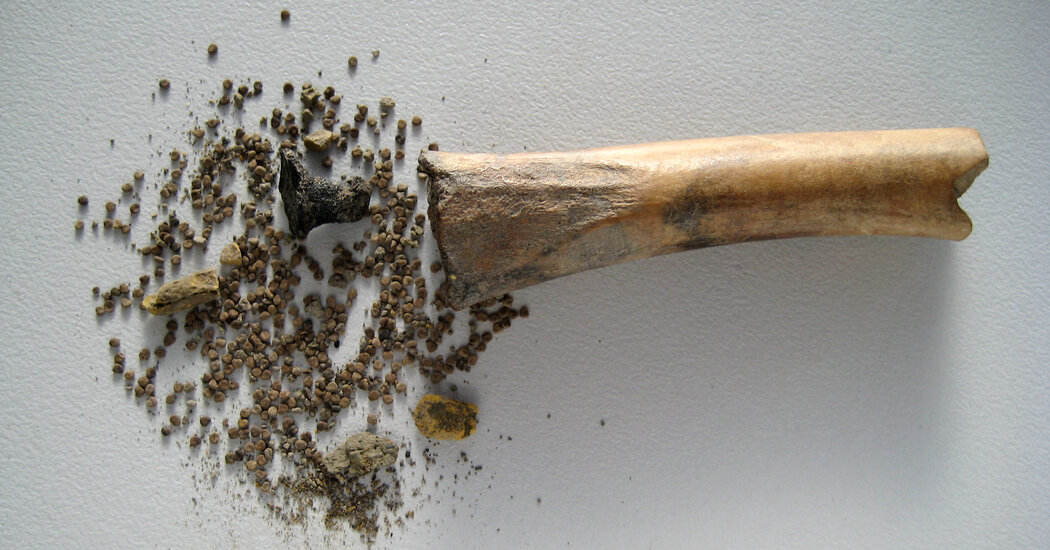
In 2011, archaeologists in the Netherlands discovered an ancient pit filled with 86,000 animal bones at a Roman-Era farmstead near the city of Utrecht. It fell to Martijn van Haasteren, an archaeozoologist at the Cultural Heritage Agency of the Netherlands, to sort through them.
Deep into the cataloging process, Mr. van Haasteren was cleaning the mud from yet another bone when something unexpected happened: Hundreds of black specks the size of poppy seeds came pouring out from one end.
The specks turned out to be seeds of black henbane, a potently poisonous member of the nightshade family that can be medicinal or hallucinogenic depending on the dosage. The bone — hollowed-out and sealed with a tar plug — was an ancient stash pouch that had kept the seeds safe for some 1,900 years.
Researchers determined that the bone was deposited in the pit somewhere between A.D. 70 and 100 — a time when the Netherlands represented the Roman Empire’s northern border. Parts of the container were smooth, suggesting frequent handling.
This “very special” discovery provides the first definitive evidence that Indigenous people living in such a far-flung Roman province had knowledge of black henbane’s powerful properties, said Maaike Groot, an archaeozoologist at the Free University of Berlin and a co-author of a paper published in the journal Antiquity last month describing the finding.
At the time that the original owner stuffed the container full of seeds, the properties of black henbane were already well known in Rome. Writings by Pliny the Elder and others testify to the medicinal use of black henbane seeds and leaves, but warn that an overindulgence will result in mind-altering effects.
